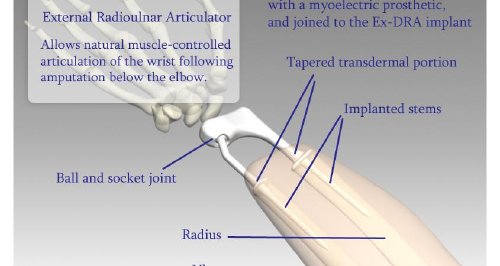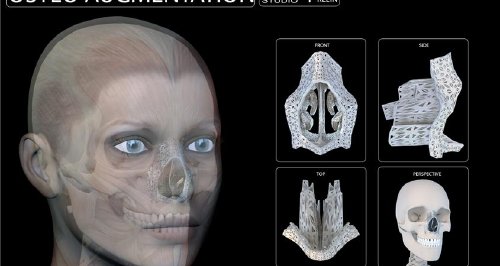Winner announced of i.materialise Machine Man Human Augmentation Challenge
The i.materialise Machine Man Human Augmentation Challenge was inspired by Sci Fi author Max Barry’s book Machine Man. Max, together with other judges, Fab@Home founder and Cornell bio-robotics professor Hod Lipson and 3D printed prosthetic designer Scott Summit have evaluated the submitted designs. They were looking for a design and concept that augmented the human body using 3D printing. They wanted people to imagine a future where human elective implants would be accessible. We wanted a design and a 3D print that would inspire people to be able to imagine such a world. This is the most difficult and ambitious Challenge we”ve ever done and we’re glad that we are able to now announce the winners.
In third place is the iNose by Miel Wellens
According to the judges:
“In this concept, a titanium, subsurface implant lives on the bridge of the nose, allowing eyewear to attach without the need for earpieces. Presumably, the implanted part would be created based on the unique morphology of each user, speaking to the versatility of this technology. As a practical solution, it makes sense and solves its proposed problem elegantly.”
“This is a simple concept with wide application and great potential for future upgrades. It requires only minimal invasion of the body with no major drawbacks (such as loss of sensation) and thus could be suitable as a consumer-level product, as the Better Future corporation seeks in “Machine Man.” One can easily imagine a range of enhanced glasses that could interface with the eyeNose implant (or a future version thereof) to provide in-eye display of data, for example.”
The Second Placed winner is with Ex-DRA is Aaron Trocola.
“This concept speaks to the exciting future of osseointegration as it applies to amputees. The value of a prosthetic that integrates directly to the bone structure is immense, both in its potential for comfort and usability, as well as in how it stands to return to the user a sense of wholeness and physicality that an adjunct limb may never quite achieve.This concept is especially intriguing in that it not only replaces lost functionality – as an osseointegrated femur or tibia does – but it also returns to the user one of the forearm’s degrees of motion, by re-enabling pronation and supination.”
In first place, is Osteo Augmentation by HinesDibrova Studio and Ben Klein
“Beautiful design that takes advantage of the fabrication technology in printing complex geometry that cannot be made any other way.”
“This concept extrapolates on the current maxillofacial implants that are currently being used, but takes the technology considerably further. Instead of simply adding mechanical and volume replacement, as current implants do, this concept proposes to recreate the complex contours of the sinus cavity, taking full advantage of the vast flexibility offered by this technology. The designers depict beautifully the complex trebecular structure of the implant, which would invite the bone ingrowth needed to fully integrate the implant with the body. I especially appreciate that they considered the vital role that the sense of smell plays in our quality of living, and have created a concept where such a seemingly unlikely technology as additive fabrication could stand to return something so significant to the individual in need.”
Congratulations to the winners and thank you so much for all your entries. Thank you so much also to the judges for their insights and time.
Recommended Articles
No related posts.





